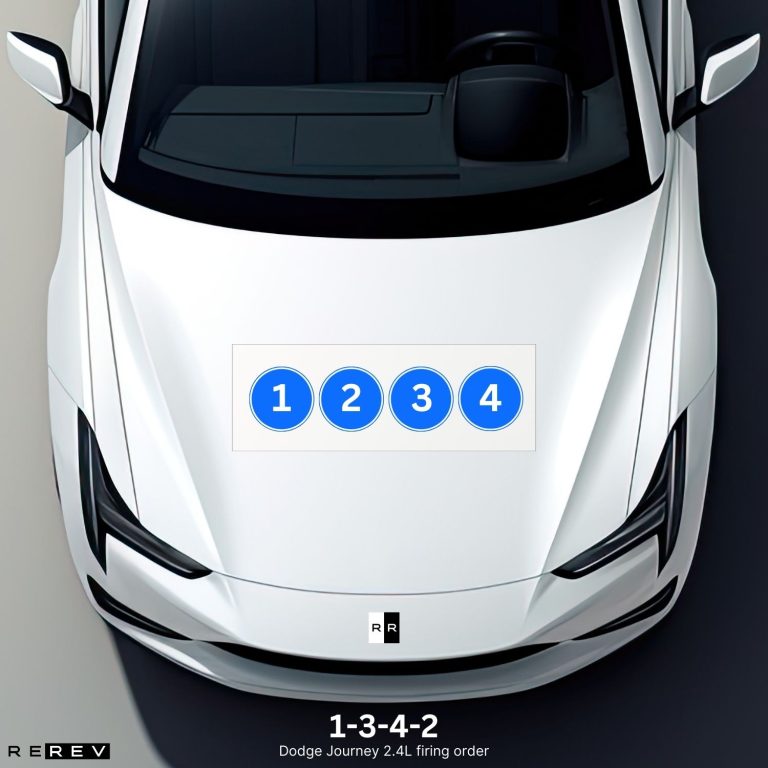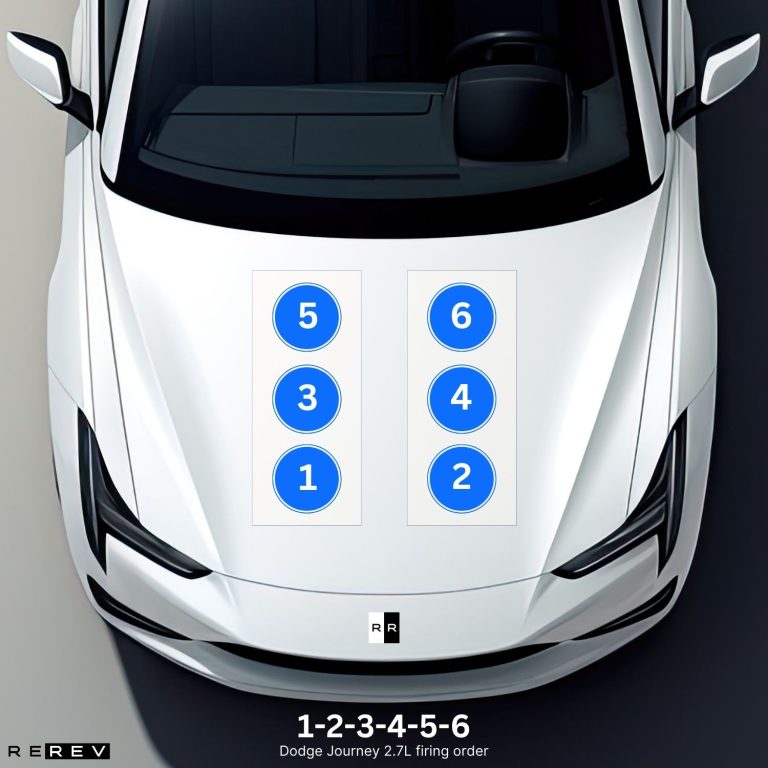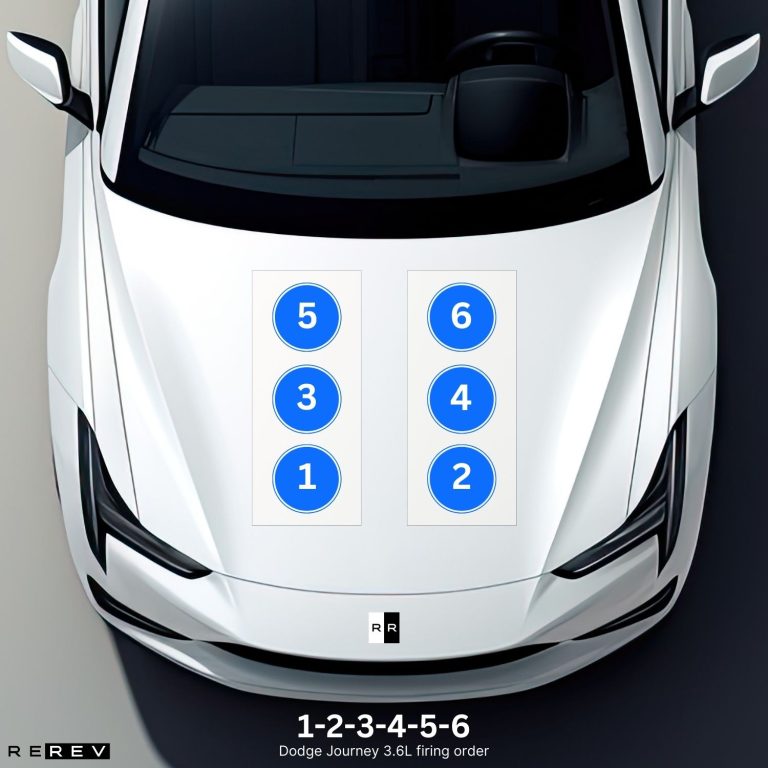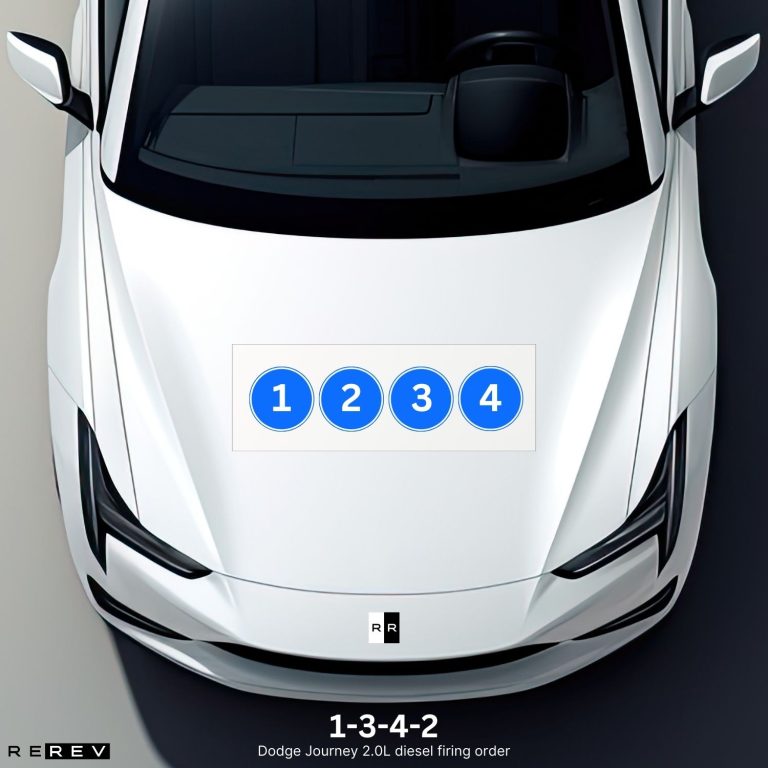Dodge Journey (2008-2020) firing order — diagram & guide

Ever since it came out in 2008, the Dodge Journey has been one of the favorite commercial options for drivers looking for a mid-size crossover vehicle. It’s been popular worldwide and even sold as a rebadged Fiat Freemont in Europe, and the wide application of this model can be attributed to its reliable engines.
While that’s something that draws drivers in when buying one, it’s a different story to maintain the car’s engine as it’s supposed to be maintained. So, this guide on the Dodge Journey (2008-2020) firing order might help you get a sense of how you can check the engine and its cylinders yourself without professional help to avoid misfires and similar issues.
| JOURNEY YEARS | ENGINE | FIRING ORDER |
|---|---|---|
| 1st Gen (2008-2020) | 2.4L | 1-3-4-2 |
| 2.7L V6 | 1-2-3-4-5-6 | |
| 3.5L V6 | 1-2-3-4-5-6 | |
| 3.6L V6 | 1-2-3-4-5-6 | |
| 2.0L diesel | 1-3-4-2 |
First-generation Dodge Journey (2008-2020) firing order
Since the Journey has only been produced in a single generation, we’ll be focusing on all the engines in this generation model along with the facelift model that started in 2011. All the Journey models featured optional four-cylinder and six-cylinder engines along with a 2.0L diesel option, so let’s see how these compare when it comes to the firing order.
Dodge Journey 2.4L firing order

The Dodge Journey 2.4L firing order is 1-3-4-2 which is a common pattern of a four-cylinder engine made by Dodge. It also uses the common left-to-right cylinder alignment when you look at the engine’s cylinders as the first one is on the left side of the engine, with cylinders 2, 3, and 4 spreading to the right.
Dodge Journey 2.7L firing order

For our next engine, we’ve got the first V6 used in a Journey and it’s the 2.7L V6 made together with Chrysler. So, we’ll tell you right off the bat that the Dodge Journey 2.7L firing order is 1-2-3-4-5-6 and this is the same firing order used for all the V6 engines included as options for this model.
However, there’s one major difference between various Dodge V6 engines since not all of them feature the same cylinder alignment. For instance, this engine is a longitudinal V6 so there’s a passenger’s cylinder bank with cylinders 1, 3, and 5, and the driver’s side cylinder bank with cylinder numbers 2, 4, and 6.
Still, it’s not the same for all the engines offered, so even though all the V6 options feature the same firing order, the cylinders are not positioned in the same way.
Dodge Journey 3.5L firing order

To support our previous statement, the 3.5-liter V6 is pretty similar to the 2.7L engine as it’s also a longitudinal V6. It means that the Dodge Journey 3.5L firing order is 1-2-3-4-5-6 as well and the cylinders are arranged in the exact same way.
So, cylinder number one is on the passenger’s side of the engine along with cylinders 3 and 5 looking at it front to rear. Cylinders 2, 4, and 6 are on the driver’s side also front to rear.
Dodge Journey 3.6L firing order

As the final V6 opinion for the Journey model, we have the 3.6L engine with the firing order 1-2-3-4-5-6 once again. This one features the exact same cylinder configuration as the 3.5-liter one, so the cylinders 1, 3, and 5 are on the passenger’s side, with cylinders 2, 4, and 6 being on the driver’s side.
Dodge Journey 2.0L diesel firing order

After all the V6 engines, we finally reached an exception in the Dodge Journey lineup in the form of a 2.0-liter diesel engine. This one is a bit different since it has a firing order 1-3-4-2 and the cylinders are arranged from the first one on the left side to the fourth one on the right side.
However, this engine should be differentiated from the 2.4-liter petrol engine since even though they share the firing order and cylinder number, this one is a diesel. So, it doesn’t have spark plugs and it requires slightly different maintenance in general to keep it properly running.
Our take
So, now that you’ve gone through our guide on Dodge Journey firing order and cylinder layouts of the different engines, you should be able to do some DIY maintenance and keep the engine running smoothly.
We hope you’ll be able to use the firing order for your specific Journey engine when needed, but if you apply some basic upkeep and strictly follow the user’s manual, you hopefully won’t have to tamper with the engine too often.